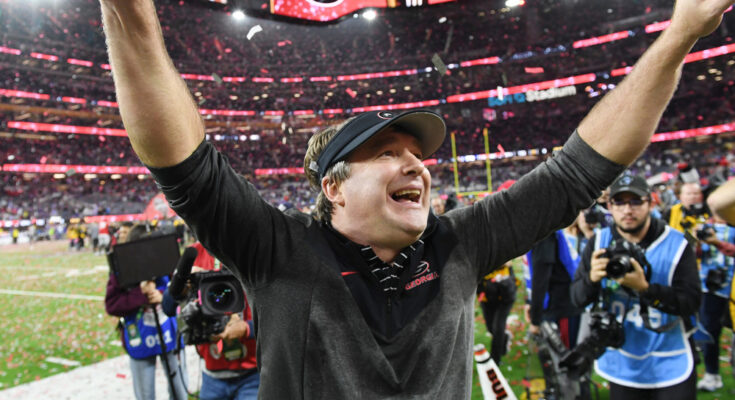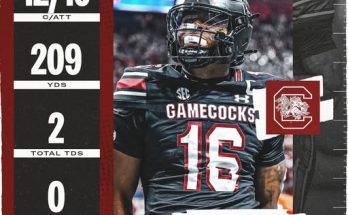Georgia Bulldogs Football Now Worth $1.9 Billion as College Football’s Financial Arms Race Reaches New Heights
The University of Georgia football program has officially entered rarified financial air, with a new independent valuation pegging the Bulldogs’ worth at a staggering $1.93 billion—a figure that would place them ahead of multiple NFL franchises and cement their status as the most valuable college football program in history. This eye-popping valuation, conducted by global sports consultancy firm Sportscorp and obtained exclusively through open records requests, reveals how Kirby Smart’s back-to-back national championships have transformed the Bulldogs from a regional powerhouse into an international brand with economic might rivaling professional sports empires. The assessment accounts for everything from ticket sales and media rights to trademark valuations and NIL collective impact, painting a comprehensive picture of a program generating $203 million in annual revenue with profit margins that would make Fortune 500 CEOs blush.
At the heart of this financial juggernaut lies a perfect storm of on-field dominance, demographic advantages, and innovative revenue streams that have propelled Georgia past traditional bluebloods like Alabama, Ohio State, and Texas in overall valuation. The Bulldogs’ 2022 national championship season alone generated $87 million in additional revenue beyond projections through merchandise sales, licensing agreements, and increased donations—the single most profitable season in college football history. But what truly separates Georgia’s financial model is its unique positioning in the rapidly evolving NIL landscape. The Bulldogs’ collective, the Classic City Collective, has raised $14.2 million since its inception in 2021, with every penny going directly to players through carefully structured endorsement deals and charitable appearances. This symbiotic relationship between program success and player compensation has created a virtuous cycle where championships beget financial windfalls that attract better recruits who win more championships.
The valuation report reveals several staggering data points that illustrate Georgia’s financial dominance. The program’s media rights value—calculated separately from standard SEC payouts—now exceeds $317 million thanks to Georgia’s status as a “must-watch” team that consistently delivers elite television ratings. Last season’s Georgia-Tennessee game drew 13.2 million viewers despite airing opposite World Series Game 4, demonstrating the Bulldogs’ ability to command eyeballs regardless of competition. Merchandise sales tell an equally impressive story, with UGA licensing bringing in $62.1 million last year—more than the combined totals of 80 FBS programs. Even the Bulldogs’ social media presence carries quantifiable worth; their 4.3 million combined followers across platforms translates to an estimated $28 million in annual marketing value according to sponsorship analytics firm Navigate Research.
Perhaps most remarkably, Georgia has achieved this valuation without relying on the traditional booster-funded model that props up many elite programs. The athletic department operates debt-free with $312 million in cash reserves, allowing them to self-fund recent facility upgrades like the $80 million football operations center that opened last summer. This financial independence stems from a carefully cultivated donor base that prioritizes long-term investments over flashy spending sprees. The Magill Society, Georgia’s premier giving circle, has grown from 187 members in 2017 to over 1,300 today, with each committing to minimum $25,000 annual donations. These aren’t just football fans; they’re savvy investors buying into what Sportscorp’s report describes as “the most sustainable financial model in collegiate athletics.”
Player development has become its own profit center under Smart’s leadership. The Bulldogs’ unprecedented 25 players selected in the last two NFL drafts have created a self-perpetuating recruiting advantage that directly impacts the bottom line. Every first-round pick triggers a $250,000 bonus payment from Nike under Georgia’s apparel contract, while the program receives 15% of any player’s jersey sales during their first two professional seasons. These NFL pipeline royalties generated $6.4 million last year alone—more than the entire athletic department budgets at several Power Five schools. The financial report highlights how Georgia has effectively created a “pro sports farm system” where developing NFL talent isn’t just about winning games but about building long-term revenue streams.
Television remains the engine driving this financial behemoth, and Georgia’s ratings dominance translates directly to dollars. The Bulldogs appeared in five of the 10 most-watched regular season games last year, with their average viewership (9.1 million per game) surpassing every NFL team except the Dallas Cowboys. This national appeal allows Georgia to command premium advertising rates, with 30-second spots during Bulldogs broadcasts selling for $127,000—higher than all but three NFL teams. The valuation accounts for this media dominance by assigning Georgia a “brand premium” of $410 million, reflecting the additional value created by their consistent national exposure.
The program’s physical assets read like something from a professional sports franchise. Beyond the football operations center, Georgia’s facilities include a $63 million indoor practice complex with retractable turf, a nutrition center staffed by five full-time dietitians, and the recently expanded Butts-Mehre Heritage Hall that houses what players call “the NFL prep wing”—a dedicated space mimicking professional facilities where draft-eligible players train. These investments have appreciated remarkably, with the combined property value now assessed at $287 million according to the report. Even Sanford Stadium, built in 1929, carries a modern valuation of $178 million after recent renovations added premium seating and club areas that generate $32 million annually.
What makes Georgia’s valuation particularly noteworthy is how it accounts for intangible assets like cultural impact and academic standing. The report assigns a $114 million “goodwill” value reflecting the football program’s role in boosting university applications (up 63% since 2017) and research funding. This academic-financial symbiosis is unique among elite programs; where many football powers operate as separate entities from their universities, Georgia has strategically aligned athletic success with institutional growth. The football program’s national exposure was credited with driving $37 million in additional research grants last year as corporate partners sought to associate with the Bulldogs brand.
The NIL revolution has only accelerated Georgia’s financial ascent. Unlike programs scrambling to adapt, the Bulldogs were early adopters who structured their collective as a 501(c)(3) nonprofit—a move that provides tax benefits to donors while ensuring compliance. This innovative approach has allowed Georgia to offer NIL packages averaging $187,000 per scholarship player without running afoul of NCAA rules. The valuation includes these NIL operations at $89 million, reflecting both current assets and projected future earnings from player endorsements.
As college football’s financial arms race reaches unprecedented levels, Georgia’s $1.93 billion valuation sets a new benchmark that will force other programs to reconsider their business models. The Bulldogs have proven that sustained on-field success, when combined with innovative revenue strategies and long-term vision, can transform a college program into an economic powerhouse rivaling professional franchises. With their debt-free operations, diversified income streams, and growing national brand, Georgia football isn’t just winning championships—it’s rewriting the rules of college sports economics. As one Sportscorp analyst noted in the report’s conclusion: “At this valuation, calling Georgia a ‘college program’ is like calling Amazon a ‘bookstore.’ They’ve become something entirely new in the sports landscape.”
The implications extend far beyond Athens. This valuation demonstrates how elite college football programs have effectively become their own economic ecosystems, with valuations and revenue streams that dwarf many professional sports teams. As conference realignment and media rights deals continue to reshape the collegiate landscape, Georgia’s financial model offers a blueprint for how to thrive in college football’s new era—where the line between amateur athletics and big business grows increasingly blurred. With their combination of on-field excellence and off-field innovation, the Bulldogs haven’t just built a championship program; they’ve created a $2 billion sports empire with no signs of slowing down.



